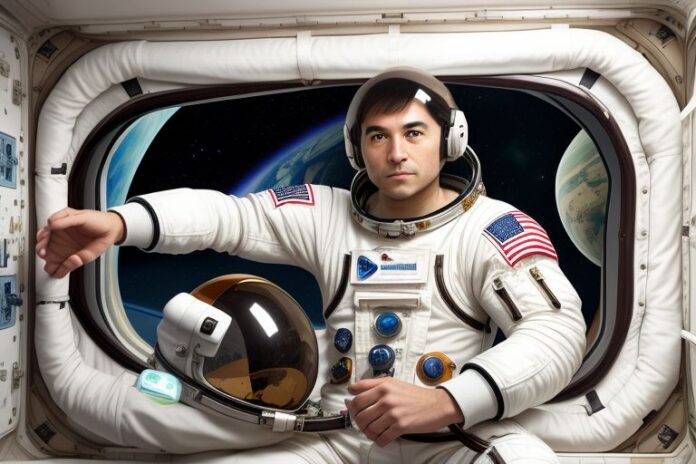People stuck in space might sound like a scene from a science fiction movie, but it is a real-life situation astronauts could face. The idea of being stuck in space is terrifying, as it involves the isolation and dangers of living outside Earth’s atmosphere. In reality, astronauts are highly trained to prevent such situations, but the risk of being stranded is always a possibility, whether due to mechanical failure or unexpected space accidents.
When people are stuck in space, every moment becomes crucial. Space is an unforgiving place, and even a small mistake or a malfunction can lead to life-threatening conditions. In this post, we will explore what it’s like when astronauts find themselves stuck far from home and how they cope with the challenges of surviving in the cold and empty vacuum of space.
Table of Contents
The Dangers of Being Stuck in Space: What Could Go Wrong
Being stuck in space is not something anyone wants to experience, especially for astronauts who face many dangers in space. The first major risk is the lack of oxygen. If something goes wrong with the spacecraft or spacesuit, astronauts may run out of oxygen, which could be deadly. Space also has extreme temperatures, both very hot and very cold, depending on where you are. Without proper protection, astronauts would quickly freeze or burn.
Another danger when people are stuck in space is radiation. Space is full of harmful radiation from the sun. Without Earth’s atmosphere to protect them, astronauts are at risk of serious health issues, such as cancer. This makes the mission to bring people back from space even more urgent. If astronauts can’t return home quickly, they face life-threatening consequences.
How People Get Stuck in Space: Unexpected Problems for Astronauts

Astronauts train for many years to avoid problems in space, but sometimes things still go wrong. A common issue is a spacecraft malfunction. For example, a space shuttle might lose power, or a spaceship could get stuck in an orbit that’s hard to change. These mechanical problems can leave astronauts stranded for hours, days, or even longer.
Space missions are also dependent on many parts working perfectly. If a piece of equipment breaks, such as the communication system, astronauts could struggle to call for help. This is why astronauts always carry extra tools and backup systems, hoping that they won’t need them. If something goes wrong, they rely on their training to solve the issue before it becomes a bigger problem.
Survival in Space: What Happens to People Stuck Far From Earth
When people are stuck in space, survival depends on their ability to work with limited resources. The first challenge is staying alive without oxygen. Astronauts use advanced life support systems, but if these systems break down, they could face serious trouble. They must constantly monitor their oxygen levels and make sure they stay within safe limits.
Another challenge is food and water. Space missions are carefully planned with enough supplies to last a certain amount of time. However, if people get stuck in space longer than expected, they may run out of food or water. In such situations, astronauts have to ration their resources and sometimes rely on emergency supplies that are designed for these kinds of emergencies.
Astronauts’ Worst Fear: What to Do if You’re Stuck in Space
Being stuck in space is every astronaut’s worst fear, and it’s one of the most stressful parts of space missions. If astronauts find themselves stranded, the first thing they do is try to stay calm. Panic can make things worse, so they use the training they’ve received to think logically. Astronauts know how to manage their resources and work together to fix the situation.
In case of an emergency, astronauts also have a strict communication plan with Earth. Mission control monitors them constantly, and if something goes wrong, Earth-based teams are ready to help. However, communication can be difficult in space because of distance, so astronauts are trained to act quickly and efficiently.
Space Technology: Can We Prevent People From Getting Stuck in Space

Space technology plays a huge role in preventing people from getting stuck in space. Modern spacecraft are designed with many backup systems to avoid dangerous failures. For example, many spacecraft have multiple engines, so if one fails, the others can still work. These advancements in space technology make it safer for astronauts to travel and explore space.
Another key technology is the life support system, which keeps astronauts alive by providing oxygen, removing carbon dioxide, and controlling the temperature. This system is highly advanced and regularly tested to make sure it works perfectly. In the future, more technologies may be developed to ensure astronauts are never in a life-threatening situation while in space.
Life After Being Stuck in Space: How Astronauts Adapt to the Space Environment
Astronauts spend months or even years in space, and adapting to this environment is a big challenge. The lack of gravity in space affects the human body. For example, astronauts lose muscle strength and bone density. They also experience changes in their vision, and their bodies can even change shape.
To stay healthy, astronauts exercise for hours each day. This helps to maintain muscle mass and bone strength. They also follow strict diets to make sure they get all the nutrients they need. Despite the challenges, astronauts adapt to life in space and continue to explore the unknown.
Key Adaptation Strategies for Astronauts:
- Daily exercise routines to maintain muscle strength
- Special food plans to stay healthy while in space
- Monitoring health to prevent issues like bone loss
Rescue Missions in Space: How We Save People Stuck in Space

When people are stuck in space, time is of the essence. One of the most important aspects of space missions is the ability to perform a rescue. Astronauts train for emergencies, and in the event of a crisis, a rescue mission is prepared. Sometimes, spacecraft are sent to pick up the stranded astronauts and bring them back safely to Earth.
Rescue missions are complicated and require great teamwork. Scientists and engineers on Earth work closely with astronauts in space, guiding them through the steps needed to return home. The rescue missions often involve careful calculations to avoid hazards like debris or radiation.
Rescue Mission Steps:
- Communication with Earth’s mission control
- Preparation of backup spacecraft
- Execution of safe landing and return procedures
The Psychology of Being Stuck in Space: How Astronauts Handle the Stress
Space is an isolated and lonely place. When people are stuck in space, the mental challenge becomes just as important as the physical one. Astronauts often feel isolated, as they are far from family and friends. To deal with this, astronauts are trained in coping strategies, like how to manage stress and maintain a positive attitude.
The close quarters of space stations can also lead to tensions between astronauts. It’s important for astronauts to work as a team, even under pressure. They are taught conflict resolution skills and how to stay focused on the mission despite any personal challenges.
Psychological Strategies for Space Survival:
- Effective team communication to avoid conflict
- Mindfulness and stress management techniques
- Maintaining personal connections with family through messages
Real-Life Stories: Astronauts Who Have Almost Been Stuck in Space

In history, there have been several close calls where astronauts were nearly stuck in space. One famous example is the Apollo 13 mission. A malfunction in the spacecraft caused a life-threatening situation, but thanks to quick thinking and teamwork, the astronauts returned safely to Earth. This event showed how space missions are always unpredictable, and why astronauts must be prepared for the unexpected.
There have also been other near-misses during spacewalks or when astronauts were on their way to space stations. These stories highlight the importance of space safety and the constant efforts made to prevent people from getting stuck in space.
Conclusion
Being stuck in space is a very serious situation. Astronauts are highly trained to handle all kinds of emergencies, but even with all the technology and preparation, space can still be dangerous. The lack of oxygen, extreme temperatures, and the risks from radiation make it clear that space is not a place to take lightly. It’s not just about surviving, but about making quick decisions and using everything you have to stay alive. Thankfully, thanks to modern technology, astronauts have more tools and knowledge to avoid getting stuck in space.
Even though astronauts are at great risk, the advancements in space technology and careful planning help reduce the chances of something going wrong. But if something does go wrong, astronauts know how to work together to solve the problem. Their training is what helps them stay calm and focused, even when everything around them seems uncertain. Being stuck in space is a frightening thought, but the bravery and teamwork of astronauts show us just how incredible humans can be when faced with the unknown.
FAQs
Q: What would happen if people were stuck in space?
A: If people were stuck in space, they would face challenges like running out of oxygen, extreme temperatures, and radiation. It’s very dangerous, and astronauts would need quick action and teamwork to survive.
Q: How do astronauts avoid getting stuck in space?
A: Astronauts train for many years, and spacecraft are built with backup systems. This helps prevent issues that could cause them to get stuck. They are always prepared for emergencies.
Q: Can people breathe in space?
A: No, there is no air in space. Astronauts rely on spacesuits and spacecraft with life support systems to provide oxygen and remove carbon dioxide to breathe safely.
Q: How do astronauts survive in space for a long time?
A: Astronauts use advanced technology for food, water, and oxygen. They exercise daily to stay healthy and prevent muscle and bone loss. They also follow strict routines to stay physically and mentally strong.
Q: Have astronauts ever been stuck in space before?
A: Yes, there have been close calls, like the famous Apollo 13 mission, where astronauts were in danger due to a spacecraft malfunction. Luckily, they were rescued thanks to quick thinking and careful planning.

